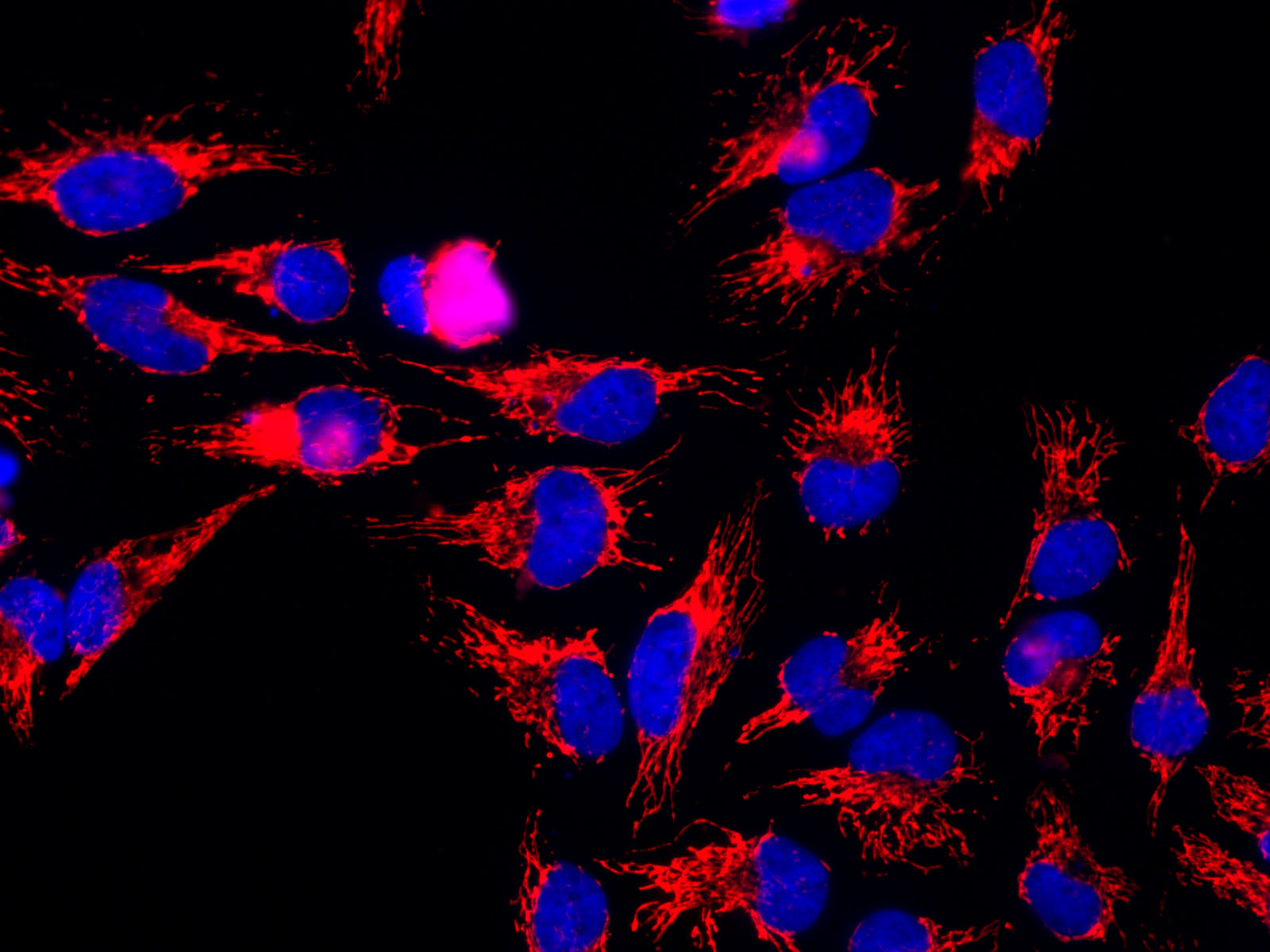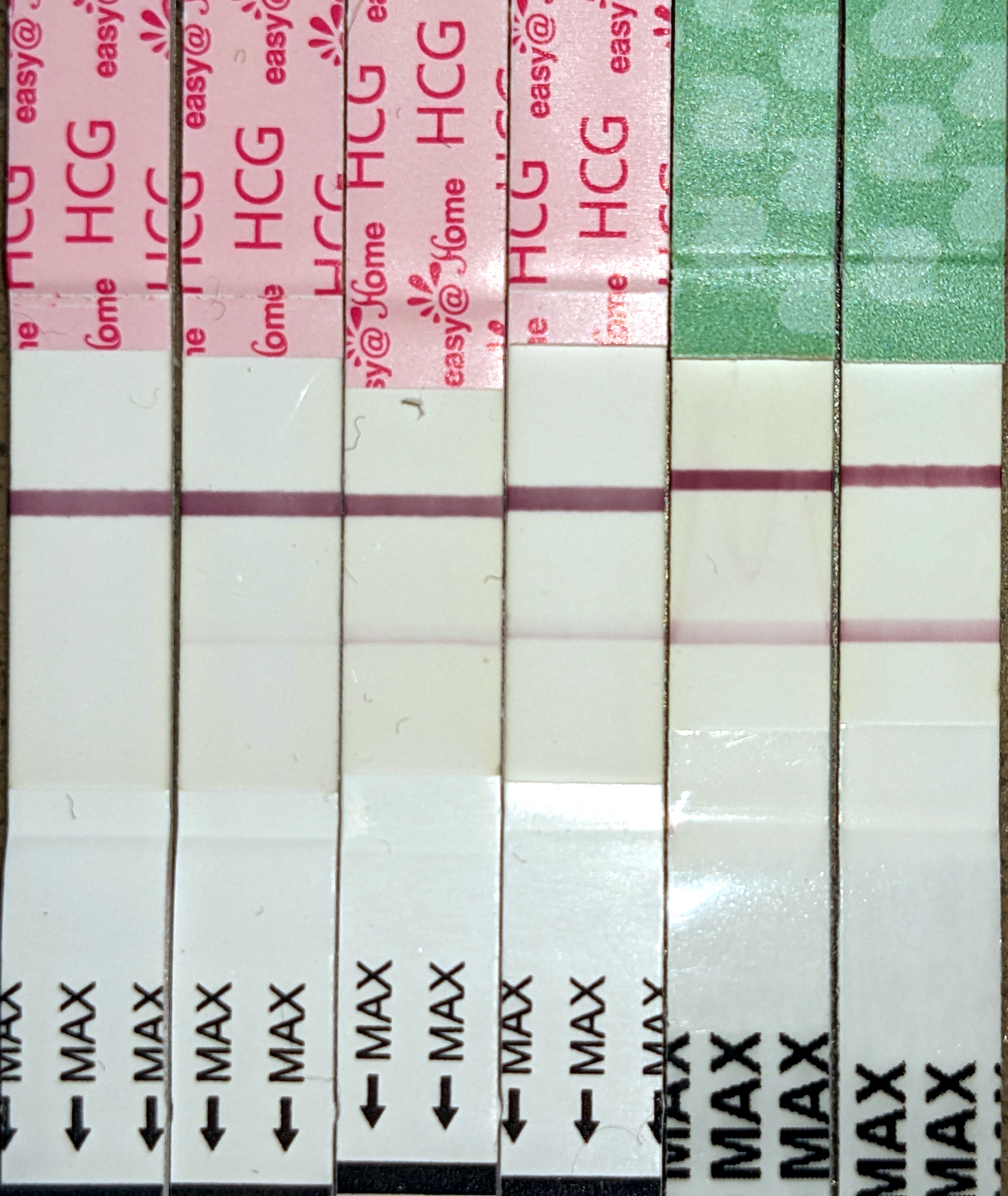|
GroES
Heat shock 10 kDa protein 1 (Hsp10), also known as chaperonin 10 (cpn10) or early-pregnancy factor (EPF), is a protein that in humans is encoded by the ''HSPE1'' gene. The homolog in ''Escherichia coli, E. coli'' is GroES that is a chaperonin which usually works in conjunction with GroEL. Structure and function GroES exists as a ring-shaped oligomer of between six and eight identical subunits, while the 60 kDa chaperonin (cpn60, or groEL in bacteria) forms a secondary structure, structure comprising 2 stacked rings, each ring containing 7 identical protein subunit, subunits. These ring structures assemble by self-stimulation in the presence of Mg2+-ATP. The central cavity of the cylindrical cpn60 tetradecamer provides an isolated environment for protein folding whilst cpn-10 Molecular binding, binds to cpn-60 and synchronizes the release of the protein folding, folded protein in an Mg2+-ATP dependent manner. The Molecular binding, binding of cpn10 to cpn60 Enzyme inhibitor, ... [...More Info...] [...Related Items...] OR: [Wikipedia] [Google] [Baidu] |
GroEL
GroEL is a protein which belongs to the chaperonin family of Chaperone (protein), molecular chaperones, and is found in many bacteria. It is required for the proper protein folding, folding of many proteins. To function properly, GroEL requires the lid-like cochaperonin protein complex GroES. In eukaryotes the Organelle, organellar proteins Hsp60 and Hsp10 are structurally and functionally nearly identical to GroEL and GroES, respectively, due to their endosymbiotic origin. HSP60 is implicated in mitochondrial protein import and macromolecular assembly. It may facilitate the correct folding of imported proteins, and may also prevent misfolding and promote the refolding and proper assembly of unfolded polypeptides generated under stress conditions in the mitochondrial matrix. HSP60 interacts with HRAS and with HBV protein X and HTLV-1 protein p40tax. HSP60 belongs to the chaperonin (HSP60) family. Note: This description may include information from UniProtKB. Alternate Names: 60 ... [...More Info...] [...Related Items...] OR: [Wikipedia] [Google] [Baidu] |
Chaperonin
HSP60, also known as chaperonins (Cpn), is a family of heat shock proteins originally sorted by their 60kDa molecular mass. They prevent misfolding of proteins during stressful situations such as high heat, by assisting protein folding. HSP60 belong to a large class of molecules that assist protein folding, called molecular chaperones. Newly made proteins usually must fold from a linear chain of amino acids into a three-dimensional tertiary structure. The energy to fold proteins is supplied by non-covalent interactions between the amino acid side chains of each protein, and by solvent effects. Most proteins spontaneously fold into their most stable three-dimensional conformation, which is usually also their functional conformation, but occasionally proteins mis-fold. Molecular chaperones catalyze protein refolding by accelerating partial unfolding of misfolded proteins, aided by energy supplied by the hydrolysis of adenosine triphosphate (ATP). Chaperonin proteins may also ... [...More Info...] [...Related Items...] OR: [Wikipedia] [Google] [Baidu] |
Anfinsen Cage
In molecular biology, an Anfinsen cage is a model for protein folding used by some cells to improve the production speed and yield of accurate products. Space within a cell is generally limited, and a protein's folding process can be interrupted or modified if it wanders too close to outside forces while it is still in the process of forming. Even worse, the unformed molecules may begin to aggregate uncontrollably, potentially resulting in a disease such as Alzheimer's. To prevent this, some cells will enclose actively folding proteins within one or more chaperones, forming a "cage" around them to protect them during their transformation. These cages can also serve to isolate incorrectly formed proteins that may otherwise affect other processes if it were allowed to float freely. The model is named after Christian B. Anfinsen who first showed in vitro ''In vitro'' (meaning ''in glass'', or ''in the glass'') Research, studies are performed with Cell (biology), cells or biol ... [...More Info...] [...Related Items...] OR: [Wikipedia] [Google] [Baidu] |
Protein Folding
Protein folding is the physical process by which a protein, after Protein biosynthesis, synthesis by a ribosome as a linear chain of Amino acid, amino acids, changes from an unstable random coil into a more ordered protein tertiary structure, three-dimensional structure. This structure permits the protein to become biologically functional or active. The folding of many proteins begins even during the translation of the polypeptide chain. The amino acids interact with each other to produce a well-defined three-dimensional structure, known as the protein's native state. This structure is determined by the amino-acid sequence or primary structure. The correct three-dimensional structure is essential to function, although some parts of functional proteins Intrinsically unstructured proteins, may remain unfolded, indicating that protein dynamics are important. Failure to fold into a native structure generally produces inactive proteins, but in some instances, misfolded proteins have ... [...More Info...] [...Related Items...] OR: [Wikipedia] [Google] [Baidu] |
Pregnancy Test
A pregnancy test is used to determine whether a person is Pregnancy, pregnant or not. The two primary methods are testing for the pregnancy hormone (human chorionic gonadotropin (hCG)) in blood or urine using a pregnancy test kit, and scanning with Medical ultrasound, ultrasonography. Testing blood for hCG results in the earliest detection of pregnancy. Almost all pregnant people will have a positive urine pregnancy test one week after the first day of a missed menstrual period. Types Human chorionic gonadotropin (hCG) Identified in the early 20th century, human chorionic gonadotropin (hCG) is a Glycoprotein hormones, alpha polypeptide, glycoprotein hormone that rises quickly in the first few weeks of pregnancy, typically reaching a peak at 8- to 10-weeks Gestational age (obstetrics), gestational age. hCG is produced by what will become the placenta. hCG testing can be performed with a blood (Serum (blood), serum) sample (typically done in a medical facility) or with urin ... [...More Info...] [...Related Items...] OR: [Wikipedia] [Google] [Baidu] |
Early Pregnancy Test
A pregnancy test is used to determine whether a person is pregnant or not. The two primary methods are testing for the pregnancy hormone (human chorionic gonadotropin (hCG)) in blood or urine using a pregnancy test kit, and scanning with ultrasonography. Testing blood for hCG results in the earliest detection of pregnancy. Almost all pregnant people will have a positive urine pregnancy test one week after the first day of a missed menstrual period. Types Human chorionic gonadotropin (hCG) Identified in the early 20th century, human chorionic gonadotropin (hCG) is a glycoprotein hormone that rises quickly in the first few weeks of pregnancy, typically reaching a peak at 8- to 10-weeks gestational age. hCG is produced by what will become the placenta. hCG testing can be performed with a blood ( serum) sample (typically done in a medical facility) or with urine (which can be performed in a medical facility or at home). The assays used to detect the presence of hCG in blood ... [...More Info...] [...Related Items...] OR: [Wikipedia] [Google] [Baidu] |
Clarice Weinberg
Clarice Ring Weinberg is an American biostatistician and epidemiologist who works for the National Institute of Environmental Health Sciences as principal investigator in the Biostatistics and Computational Biology Branch. Her research concerns environmental epidemiology, and its combination with genetics in susceptibility to disease, including running the Sister Study on how environmental and genetic effects can lead to breast cancer. She has also published highly cited research on fertility. Education and career Weinberg is originally from Connecticut. She majored in mathematics at Simmons College, graduating in 1972, earned a master's degree in mathematics from Brandeis University in 1974, and completed a Ph.D. in biomathematics from the University of Washington in 1980. Her dissertation, ''A Test for Clustering on the Circle'', was supervised by Lloyd Delbert Fisher Jr. After three years as an acting assistant professor at the University of Washington, she joined the Nation ... [...More Info...] [...Related Items...] OR: [Wikipedia] [Google] [Baidu] |
Human Chorionic Gonadotropin
Human chorionic gonadotropin (hCG) is a hormone for the maternal recognition of pregnancy produced by trophoblast cells that are surrounding a growing embryo (syncytiotrophoblast initially), which eventually forms the placenta after implantation. The presence of hCG is detected in some pregnancy tests (HCG pregnancy strip tests). Some cancerous tumors produce this hormone; therefore, elevated levels measured when the patient is not pregnant may lead to a cancer diagnosis and, if high enough, paraneoplastic syndromes, however, it is unknown whether this production is a contributing cause or an effect of carcinogenesis. The pituitary analog of hCG, known as luteinizing hormone (LH), is produced in the pituitary gland of males and females of all ages. Beta-hCG is initially secreted by the syncytiotrophoblast. Structure Human chorionic gonadotropin is a glycoprotein composed of 237 amino acids with a molecular mass of 36.7 kDa, approximately 14.5kDa αhCG and 22.2kDa βhCG ... [...More Info...] [...Related Items...] OR: [Wikipedia] [Google] [Baidu] |
Childbirth
Childbirth, also known as labour, parturition and delivery, is the completion of pregnancy, where one or more Fetus, fetuses exits the Womb, internal environment of the mother via vaginal delivery or caesarean section and becomes a newborn to the world. In 2019, there were about 140.11 million human births globally. In Developed country, developed countries, most deliveries occur in hospitals, while in Developing country, developing countries most are home births. The most common childbirth method worldwide is vaginal delivery. It involves four stages of labour: the cervical effacement, shortening and Cervical dilation, opening of the cervix during the first stage, descent and birth of the baby during the second, the delivery of the placenta during the third, and the recovery of the mother and infant during the fourth stage, which is referred to as the Postpartum period, postpartum. The first stage is characterised by abdominal cramping or also back pain in the case of B ... [...More Info...] [...Related Items...] OR: [Wikipedia] [Google] [Baidu] |
Immune System
The immune system is a network of biological systems that protects an organism from diseases. It detects and responds to a wide variety of pathogens, from viruses to bacteria, as well as Tumor immunology, cancer cells, Parasitic worm, parasitic worms, and also objects such as wood splinters, distinguishing them from the organism's own healthy biological tissue, tissue. Many species have two major subsystems of the immune system. The innate immune system provides a preconfigured response to broad groups of situations and stimuli. The adaptive immune system provides a tailored response to each stimulus by learning to recognize molecules it has previously encountered. Both use humoral immunity, molecules and cell-mediated immunity, cells to perform their functions. Nearly all organisms have some kind of immune system. Bacteria have a rudimentary immune system in the form of enzymes that protect against bacteriophage, viral infections. Other basic immune mechanisms evolved in ancien ... [...More Info...] [...Related Items...] OR: [Wikipedia] [Google] [Baidu] |
Pig Semen
The pig (''Sus domesticus''), also called swine (: swine) or hog, is an omnivorous, domesticated, even-toed, hoofed mammal. It is named the domestic pig when distinguishing it from other members of the genus '' Sus''. Some authorities consider it a subspecies of ''Sus scrofa'' (the wild boar or Eurasian boar); other authorities consider it a distinct species. Pigs were domesticated in the Neolithic, both in China and in the Near East (around the Tigris Basin). When domesticated pigs arrived in Europe, they extensively interbred with wild boar but retained their domesticated features. Pigs are farmed primarily for meat, called pork. The animal's skin or hide is used for leather. China is the world's largest pork producer, followed by the European Union and then the United States. Around 1.5 billion pigs are raised each year, producing some 120 million tonnes of meat, often cured as bacon. Some are kept as pets. Pigs have featured in human culture since Neolithic times, ap ... [...More Info...] [...Related Items...] OR: [Wikipedia] [Google] [Baidu] |






